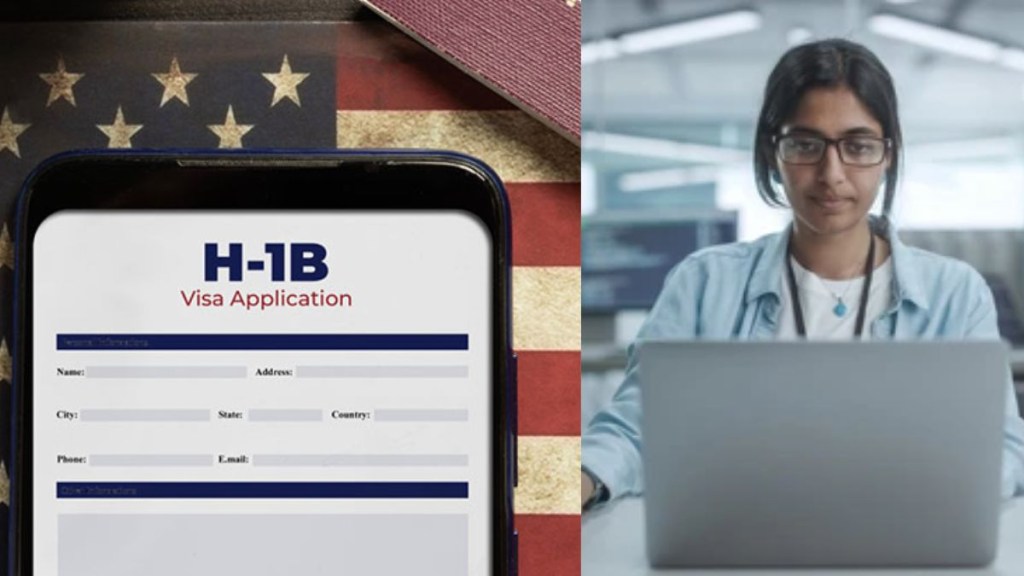The H-1B visa is a route to the American dream for thousands of skilled immigrants. It provides opportunities for employment in the US, financial security, and impeccable career growth. Top tech firms like Apple, Amazon, Google, and Meta obtain thousands of H-1B visas annually in an effort to draw in international talent.
Even though this visa has changed people’s lives, its design frequently places immigrants in a risky situation, particularly when their careers, family choices, and even creative goals are dependent on a single employer. From the outside, the lives of these visa holders appear to be full of roses, but there are some major setbacks as well.
What is an H-1B visa?
The H-1B visa is a non-immigrant visa that allows employers to temporarily hire foreign workers in speciality occupations requiring a bachelor’s degree or higher in a specific field. It is employer-sponsored and initially granted for three years, extendable up to six.
H-1B holders can apply for permanent residency under the visa’s dual intent provision. These are commonly used in fields like technology, engineering, science, and business; the visa also requires employers to pay the prevailing wage to ensure fair compensation. The total number of H-1B visa holders in the US in 2025 is approximately 442,000 as per USCIS.
How can the life of an H-1B visa holder be challenging?
With the H-1B visa, the sponsoring employer, who has authority over the visa, is directly linked to the legal status of the foreign worker. Due to this dependency, the visa holder needs the employer’s assistance in order to maintain or modify their status on their own.
Even though the “portability rule” permits employees to begin working at a new company after a new employer submits a petition to USCIS, there are still legal complications, paperwork, and uncertainty involved in the process.
“You’ve paid taxes, worked hard, but if you’re laid off, you have just 60 days to find another job or leave the country. That timeline often fuels anxiety,”said Pushkar Singh, a staff engineer at Google to Business Insider.
Since, the H-1B visa holders fear losing their visa status and having to leave the United States, workers may feel pressured to accept subpar working conditions or lower pay, which increases the risk of exploitation.
Debpriya Seal, who was laid off from Twitter during mass layoffs in 2022, was able to transfer his visa to Intuit within the mandatory 60-day window. “I applied to 50 companies in a month. Some said they could not sponsor. The stress was enormous,” as told to Business Insider.
Meanwhile, another major issue raised by H-1B visa holder is about travelling back home and visa stamping appointments. Vaashu Sharma and her husband skipped visits to India to avoid the risk of being stuck abroad due to limited visa stamping appointments.
“We missed important family events because we weren’t sure we’d get back in,” she said. The green card backlog is particularly long for Indian nationals.
Even Canadian citizens like Sai Chiligireddy, who is now working at Amazon in Seattle, feel the pressure. “My job is what keeps me in the US If I had a green card, it would just be a job.” For many, visa limitations shape everything, from family planning to where they live.
Another H-1B visa holder, Surabhi Madan, now a senior software engineer at Google in New York, was hired straight out of Brown University told Business Insider, “My life still feels temporary.”
The fear of violating visa terms holds her back from volunteering, making major life decisions, or even freezing her eggs. H-1B holders are legally bound to their job descriptions.
Side hustles, freelancing, or even teaching part-time are off-limits. Surabhi, who once considered a career in education, realised she will have to revert to a student visa which is a step down in terms of independence and salary.”
Uncertainty over H-1B visas under Trump’s presidency
At an AI Summit held in July, President Donald Trump issued a sharp warning to major tech companies like Google and Microsoft, urging them to curb hiring overseas, particularly in countries such as India and focus instead on creating jobs for American workers. This also takes an aim at H-1B visas.
Trump criticised what he described as the tech industry’s “globalist mindset”, adding that US companies have prioritised foreign investments and workforce expansion abroad, especially in China and India.
“Many of our biggest tech companies have benefited from American freedom, yet they’ve chosen to build factories in China, hire workers in India, and stash their profits in places like Ireland,” Trump said.
“At the same time, they’ve censored Americans here at home. Under President Trump, those days are over. Winning the AI race will demand a new spirit of patriotism and national loyalty, not just in Silicon Valley, but across the entire tech industry,” he added.
According to Crunchbase, more than 95,000 U.S.-based tech workers were laid off in 2024, with another 4,500 jobs slashed in just one week of July 2025. The list of companies making cuts includes tech heavyweights like Meta, Microsoft, Amazon, Google, Salesforce, Intel, and Oracle.
These are not just about cost-cutting measures, they represent a structural shift in the tech industry toward leaner teams and AI-powered operations. A leniency towards AI driven process in tech companies could also mean more Indian techies with H-1B visa can be laid off.
According to Bloomberg, nearly 80,000 Indian workers on H‑1B and L‑1 visas have lost their jobs since late 2022, many of whom are given just 60 days to find new employment or leave the country. In today’s job market, that is a race against time.
There is also a growing wave of hostility toward high-skilled immigration that is targeting both the H‑1B and the OPT (Optional Practical Training) programmes.
USCIS Director Joseph B. Edlow has voiced his intent to end employment authorisation for F‑1 students after graduation this would shut down a crucial on-ramp to H‑1B sponsorship for thousands of Indian STEM graduates.
